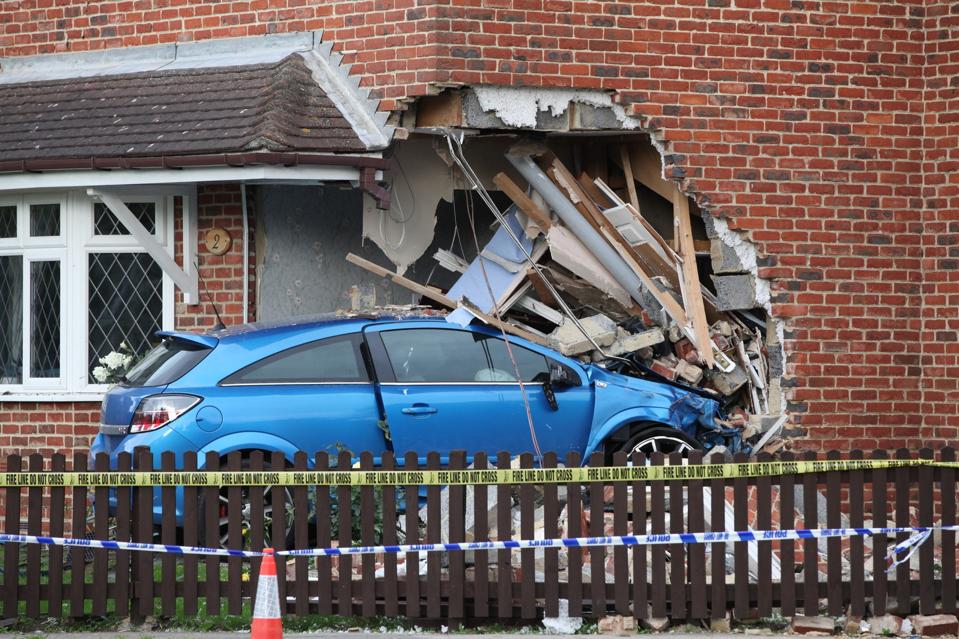My mother-in-law had just downsized from her charming but large house into a comfortable, brand new 2-bedroom in a lovely neighborhood. But the house happened to be positioned right where the street made a “T.” Drivers would stop and make a left or a right.
Within a week, a car was in her living room. An elderly driver had stepped on the gas instead of the brake and Peggy said “It sounded like a bomb went off.” Fortunately she was not in the living room and no one was hurt but it was a months-long process of paperwork, contractors and waiting for checks.
It’s not a situation most people expect, but it happens more often than you’d think – a car crashes into a house. Whether it’s a drunk driver, medical emergency or just someone who hit the wrong pedal, the result is chaos. Here’s what you need to do immediately — and in the days that follow — to protect yourself, your home, and your sanity.
Call 911 Immediately
Your first move is to call 911 — even if the driver insists they’re fine or tries to leave. You’ll need police on the scene to document everything, and if there are any injuries (including your own), paramedics will be dispatched. Let the pros assess the situation. Even a small crash can compromise your home’s structural integrity.
Don’t Enter the Impact Zone
If the crash damaged a wall, foundation, or support beam, stay out of that part of the house until a building inspector or fire department clears it. One wrong move could bring down a ceiling or cause further collapse.
Document, document, document
Take photos and video from multiple angles. Capture damage to your house, the car’s position, license plate, skid marks, debris, and anything else that tells the story. Write down what you remember right away — time, weather, noise, any details about the driver — because stress fogs memory fast.
Exchange Info with the driver when appropriate
Don’t argue, don’t accuse. Just gather facts. If the driver is uncooperative or flees the scene, let the police handle it.
Notify Your Home Insurance Company Quickly
File a claim ASAP. Even though the driver’s auto insurance will likely pay for the damage (under their property liability coverage), your own homeowners insurance may help cover emergency repairs, hotel stays, or cleanup in the meantime. Ask your adjuster what’s covered and when.
Secure the Property
Once emergency services give you the all-clear, board up any holes, broken windows or damaged doors to prevent theft or injury. If needed, hire a contractor or mitigation service to help with emergency repairs — and keep receipts for everything.
Contact a Structural Engineer or Contractor
Your insurance may send someone, but it’s smart to have your own evaluation. Structural damage isn’t always obvious. Cracks, bowed walls, or shifts in your foundation may not show up for weeks. Peggy, whose house was hit, discovered problems in the foundation months after the crash when a contractor was inspecting it.
Get Legal Help
If the damage is extensive or the driver was uninsured or underinsured, consult a lawyer. You may need help recovering full compensation.
Be gentle with yourself for awhile
Any crash is traumatic, but having your home hit is especially nerve-shattering. You might feel unsafe in your home for a while. That’s normal. Get support if you need it — from a therapist, friends, or online communities. If you see a therapist, keep receipts to be presented when the time is right for reimbursement.

